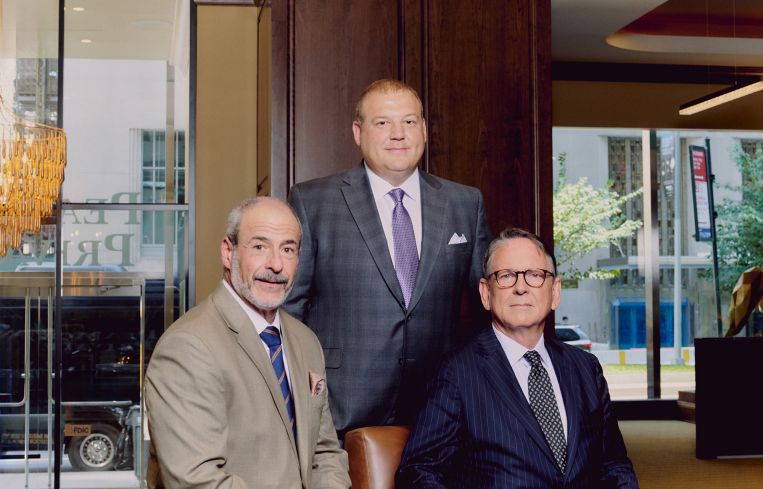Sunday Summary: NYC Is Officially the Most Expensive City to Build In
By The Editors July 13, 2025 9:00 am
reprints
Sometimes you know something is going to happen without necessarily having the data to back yourself up: The mullet would be cyclical in men’s hairstyle. The cybertruck would flop. Knicks fans would have their hearts broken. Crypto would eventually crash and burn. (Oh, wait — that one hasn’t happened yet.)
And, New York City would become the most expensive place in the country to develop real estate.
In fact, allow us to amend that. It is the single most expensive city in the whole world to develop real estate, and, unlike that previously undeniable truth about the Knicks, this assertion now can be proved with numbers.
Last week Turner & Townsend issued a new report showing that it cost an average of $534 per square foot to develop new construction in Gotham, making it the most expensive city to build in the 99 metropolises Turner & Townsend surveyed. (San Francisco was second at $512 per square foot, and Los Angeles third at $445.)
Many of the reasons will feel old hat to NYC’s real estate observers, but a good deal of it boils down to the high price of labor.
The steeper tariffs also probably don’t help, adding approximately 5 percent to the estimated construction inflation expected this year.
However, demand remains high, and that’s something that will no doubt keep the numbers high, too.
For instance, Baron Property Group is shelling out $82.5 million to LargaVista Companies for the development site at 30-25 Queens Boulevard in Long Island City, Queens, with plans to build a 561-unit apartment complex.
A few more stops on the 7 train in Flushing, Queens, Blackstone is expecting to nab $450 million for mixed-use development The Shops at Skyview, which would be a handsome $50 million more than they paid for it back in 2015.
In Chelsea, at 101 Seventh Avenue (the former home to a Barneys department store), Wolfe Landau’s Watermark Capital Group is planning a conversion to multifamily.
On the Upper West Side, landlord Janusz Sendowski picked up a six-story, 86-unit apartment building just off Central Park from Clipper Realty for $45.6 million. (Anyone worried about what might happen to these kinds of rental property transactions under a Zohran Mamdani mayoralty? Yes, but they needn’t worry so much.)
Heck, even WeWork, which is still only a year from exiting bankruptcy after having dramatically overcommitted on its leasing commitments, has gotten back to signing deals, taking 60,000 square feet at AmTrust RE’s 250 Broadway.
Financing is there for landlords like Tishman Speyer, which just scored a hefty $330 million in CMBS financing for 300 Park Avenue, while at the same time another $55 million mezzanine from Macquarie Capital Principal Finance on the property.
The beat goes on in Miami
Another place where building hasn’t slowed down — and where the new supply hasn’t seemed to have a negative effect on rents! — has been Miami.
Office rents jumped 14.4 percent to $62.61 per square foot in Miami-Dade County, according to a new report by Savills. (This is 55.3 percent more than it was back in 2020.)
Indeed, flashier tenants are getting comfortable in South Florida. Last week we learned that Amazon grabbed an additional 25,000 square feet at L&L Holding Company and Oak Row Equities’ Wynwood Plaza, bringing its footprint up to 75,000 square feet.
And South Florida’s residential boom hasn’t slowed down with deals like the $100 million debt package we saw at Sevilla, a seven-story, 412-unit development that Armando Codina’s Codina Partners is building in Doral, or T2 Hospitality plunking down $36.6 million for the five-story, 137-room oceanfront motel Plunge Beach Resort in Fort Lauderdale.
L.A. is (finally!) getting in on the action
Reading CO’s pages, one would be forgiven for sometimes thinking that Downtown L.A. was the real estate equivalent of a basket case.
There was crime, there was homelessness, there were real estate bankruptcies. It only made sense to write off this critical metropolis.
Indeed, with residential occupancy surging (surpassing pre-COVID levels), violent crime down (homicides are down 20 percent in the first half of the year), and some of the biggest problem properties finally getting sold off, one is tempted to use the word “turnaround.” (Although readers in the film industry might caution us from using that word too freely.)
Properties like 777 Tower, the Gas Company Tower, EY Plaza and Figueroa at Wilshire have all traded in the last year. And upgrades are happening at buildings like City National Plaza and U.S. Bank Tower.
This feels… pretty good!
Fickle Fingerman of fate
COVID aside, if we were to name the single most traumatic event for the real estate industry over the last couple of years, it would have to be the collapse of Silicon Valley Bank and all the collateral damage that went with it.
One of the big banks to fail in its wake was Signature Bank — thanks in part to the bank’s $16.52 billion exposure to cryptocurrency. And there to witness the disintegration was Joe Fingerman, who led Signature’s real estate team.
“It was never in our minds that we would fail,” Fingerman told CO in his first big interview since the bank went under. “We were quite solvent when the FDIC seized us, so the thought of this happening was surreal. In our opinion, it was a definite overreach of [the FDIC’s] authority, and we just couldn’t understand how this could be possible. The first thing you think about are your clients and employees and what to say to them. Unfortunately, it takes time to gain some clarity, especially during times of turmoil and unanswered questions.”
Fingerman has a new position at Peapack Private Bank & Trust — along with Andrew Corrado.
He spoke about Signature, Peapack and more.
See you next week!


